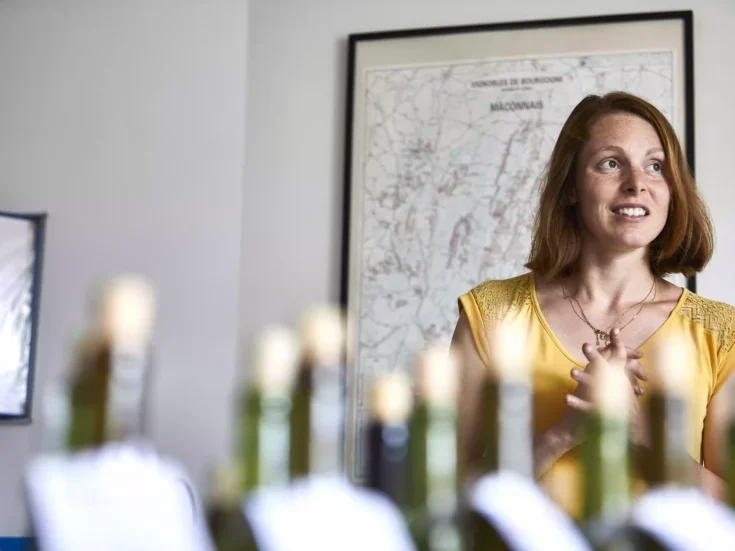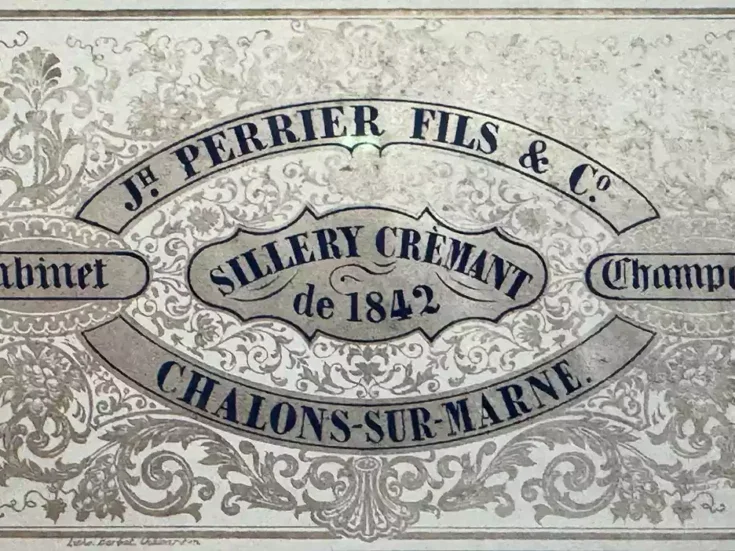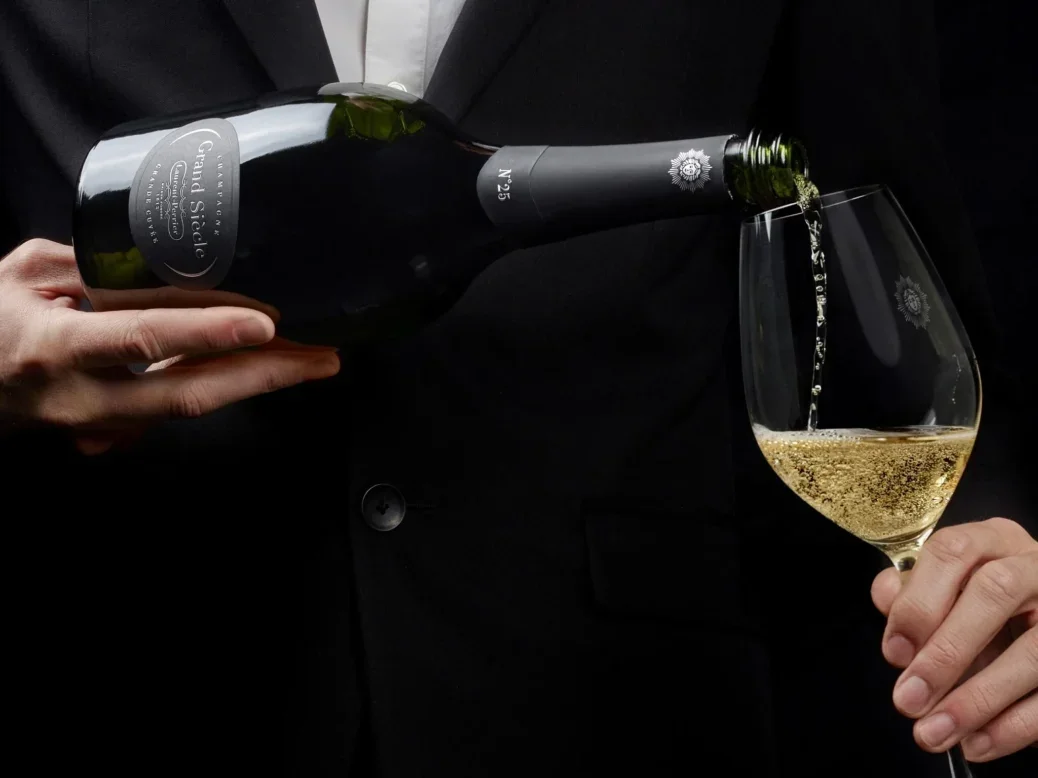
Over the past year, The World of Fine Wine has published hundreds of our writers’ notes and scores on Champagne. Here we pick out some of the most notable and admired bottles that appeared in print and online in 2023.
Champagne Pierre Gimonnet et Fils: Whispering and crooning in a silvery world
Our year of Champagne kicked off with Terry Theise on typically lyrical form as he tasted his way through the latest releases from Pierre Gimonnet et Fils.
“I sometimes wonder if Gimonnet is really ‘understood,’ notwithstanding their market success,” Theise said. “I suspect the estate’s essence, the particular way they enact terroir, is too little attended to. And I suspect (with sinking stomach) that many young tasters find the wines too ‘conservative’ and don’t know how to respond to something that’s clean and technically correct. Man, I hope I’m totally wrong about that. More thoughts along this line will appear within the tasting texts, as they came to me spontaneously. But to summarize them, I’d say that Gimonnet’s Champagnes impress drinkers who do not need wines to be ‘impressive.’ The key word being ‘need,’ because we all enjoy impressive wines, but I do not require that particular entertainment, when wines are as fine as these are.”
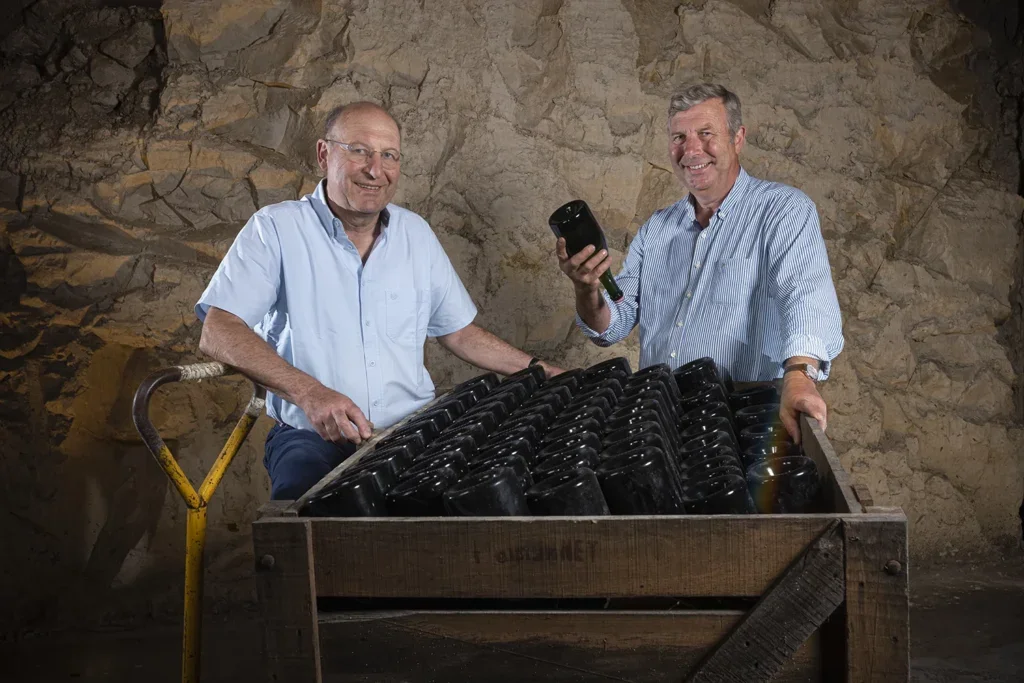
Pierre Gimonnet et Fils Fleuron, 1er Cru, Brut 2017
The “regular” vintage wine; 72% Grand Cru, 28% 1er Cru, disg. 10/18/2021
It’s the exotic in the range, all satsuma and persimmon and a curious sort of floweriness that presents as lychee and rose, but not exactly the way Gewürztraminer does.
The best way to say this is, it’s a kick-assvintage of Fleuron. The aromas do not prepare you for the swollen attack on the palate. But it isn’t aggressive, just generous and extroverted and tangible.
Didier has reached a point in life where his grown kids are working at his side, and you can imagine what that’s like. Relief: they’re here.Tact: they have to find their own ways and try their own ideas.Pride: But the old man has a few more tricks up his sleeve.I mean, how could anyone drink this Champagne and think “Well that needs to change…?’
I find it moving, when you taste from an estate that is clearly in-the-zone, but what seems clear now is a through-line from Belles Année to here, as if this wine is the older sibling of that one. It has the element chefs call “caramelization,” when a Maillard reaction occurs (as best I understand it), and it also has actual fruit, apricot, and plum.
In the end it has a thing I can only describe as an ether of honey. It’s spicier and more vertical from Juhlin 2.0, and I could imagine if you had it from, say, a Jamasse glass it would be like a potion of malt. (If this seems geeky to you, the question of what’s the “proper” glass for Champagne remains debated, and no consensus has emerged. The “Jamasse” glass was crafted by the sommelier at the Crayères in Reims, and its effect is to flatter whatever’s served in it.)
Roederer Late Release Vintage 1990–1999: Uniquely gastronomic
In February, Anthony Rose reported on Louis Roederer Late Release Vintage 1990–1999, a set of VintageChampagnes that show the magic of post-disgorgement aging.
“It was the inaugural tasting of the Vintage Late Releases series, the first part of which was provided for this occasion. What I and perhaps others in the room were unsure of was precisely what Vintage Late Releases series meant. While clearly Vintage wines, as distinct from Cristal, my expectation was that these were mature Champagnes that had lain in the cellar only to be late-disgorged. Not so, however. The revelation was that yes, these were older Vintages from the 1990s, but they had been disgorged at the same time as the then releases, albeit with slightly lower dosages—of 8–9g/l—than the Vintage releases of the time, and left undisturbed in Roederer’s cellars all this time since disgorgement.”
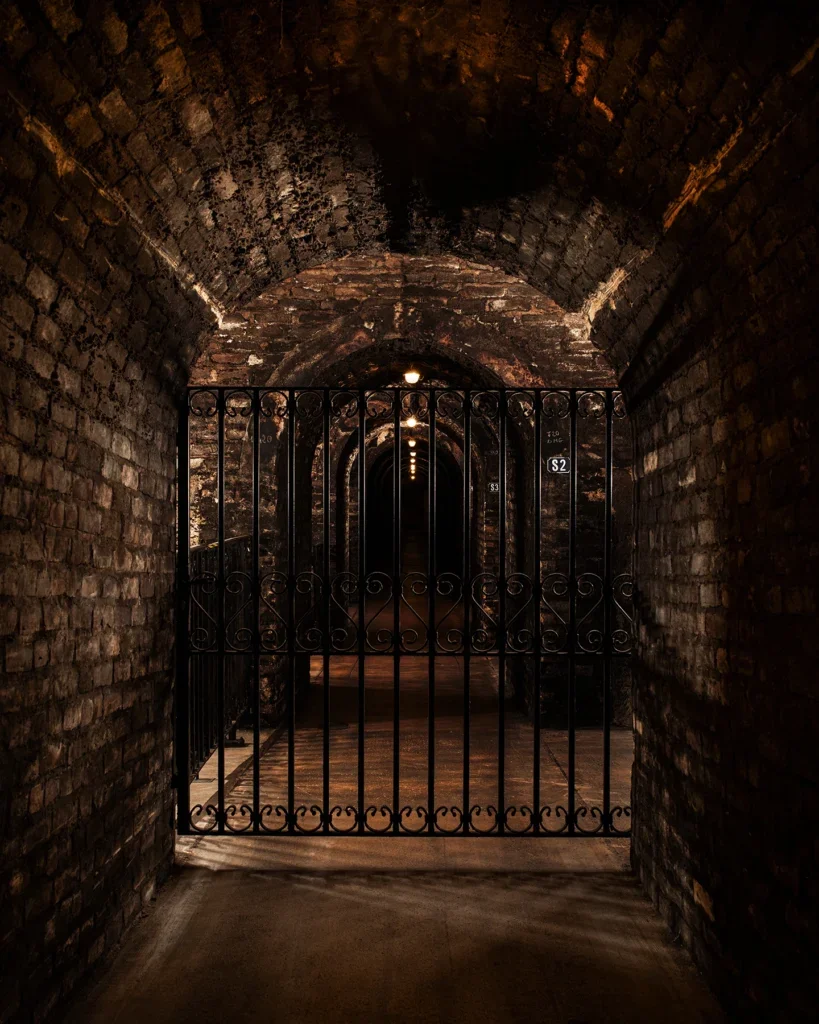
1999 Roederer Late Release Vintage (Magnum)
1999 was a stormy, windy year of sunshine and rain, the lowest in acidity since 1959. Many were afraid that it wouldn’t last and would lack freshness, but “freshness is more than just acidity,” insists JBL. The blend is 60% Verzy Pinot Noir, 40% Chouilly Chardonnay; there is no malolactic fermentation and 21% oak fermentation, with 8g/l dosage in place of the original 12.
Mid-gold, rich and ripe, displaying an exotic ripeness of aroma, with an almost white Burgundy-like nuttiness; it’s vinous, with an expansive mousse on the tongue bringing both an energy and a soft caressing texture to the wine, as the bubbles contained in the plump, peachy fruit dissolve gently and the light, toasty aromas and flavors slowly dissipate, in an opulent, balanced Champagne that retains its balance and freshness. | 97
Ruinart 1926: Vin de contemplation
Simon Field MW travelled to Lyon to taste, with Ruinart chef de cave Frédéric Panaïotis, a bottle of venerable Champagne laid down by Paul Bocuse from his birth year, one of a set of recently discovered bottles that were returning to Reims to form the cornerstone of the house’s new oenothèque cellar.
“When [Restaurant Paul Bocuse head sommelier] Maxime Valèry pulls the cork—delicately, oh so delicately—there is general relief that it comes out whole, even if without much by way of gaseous panache. This relief is redoubled on tasting. There is gentle vestigial effervescence and enough freshness behind the amber robe and gamey aromatic to justify all the anticipation and ensuing ceremony. As the only Englishman present, I am quietly pleased to note that the wine is labeled as Carte Anglaise, one of three cuvées made by M Hazart in 1929 and, if one may hazard a guess, presumably intended for the Anglo-Saxon market. A further anomaly is the spelling of Reims with an “h” on the label, as in “Rheims,” further proof of this Champagne’s venerability and authenticity. Frédéric compares the style to that of a Tokaji—an interesting observation, more than supported by the marmalade aromatic and high-acid, gamey taste and texture, if not, of course, by the residual sugar. Everyone is happy, even more so with the further treat of lunch in Bocuse’s dining room, with famous dishes such as Valérie Giscard d’Estaing’s soupe aux truffes noirs Elysée and volaille de Bresse en vessie on the menu. Four more Ruinart wines accompany the food, together with a 2019 Meursault from Domaine Faiveley and a 2020 Côte-Rôtie from Domaine Burgaud. A very special day, one cannot deny.”
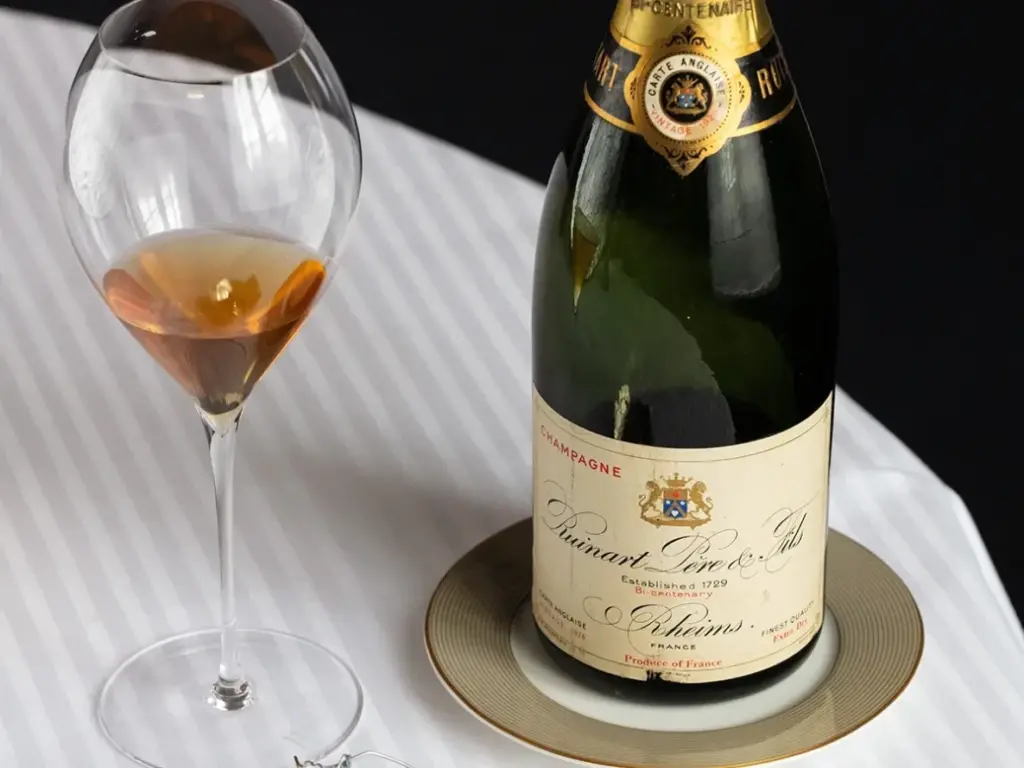
Ruinart 1926 Carte Anglaise
Vinifed in wood and aged on the lees under cork (the best practices are cyclical, it seems), and probably disgorged relatively soon afterward. The 36-month aging rule had yet to be introduced, and many wines would have followed market demand, so this may well have been disgorged a mere two years after being laid down. 1929 was to be Ruinart’s bicentenary.
The cork is impressively robust (if somewhat silent on release), ditto the wine, from its soft amber/brown color, to the nose of dried apricot, brown-sugar marmalade, and nutmeg. The acidity certainly preserves the spirit… then mushroom, dried fruit, oranges and plum. Finally, a whisper of Cognac and tobacco. A vin de contemplation, just shy of centurion status but far from reticent in other respects. Well worth the detour! | 95
Pol Roger Vintages 1934–2012: Champagne confidential
Charles Curtis MW headed to Epernay to enjoy a vertical of Champagne Pol Roger in which the oldest wine (1934) was something of a disappointment, but in which many other vintages were at the very top of their game.
“The offices of Champagne Pol Roger are discreet, almost hidden in plain sight. Set back from the glitzy Avenue de Champagne in Epernay, the location is central yet tucked away—a metaphor, in a way, for the image of the house itself. Although this venerable family-owned house is well known, the character is somewhat confidential. It is among the smallest in volume of the houses of this stature, though British clients have long favored Pol Roger wines. The brand was, famously, the preferred Champagne of Sir Winston Churchill, who consumed large quantities of it, and it enjoyed the royal warrant of Queen Elizabeth II. Despite these somewhat dusty accolades, the brand remains acutely relevant. Not only was it served at the wedding of Prince Harry and Meghan Markle, but a recent tasting held in the US proved to this observer that the wines are better than ever.”
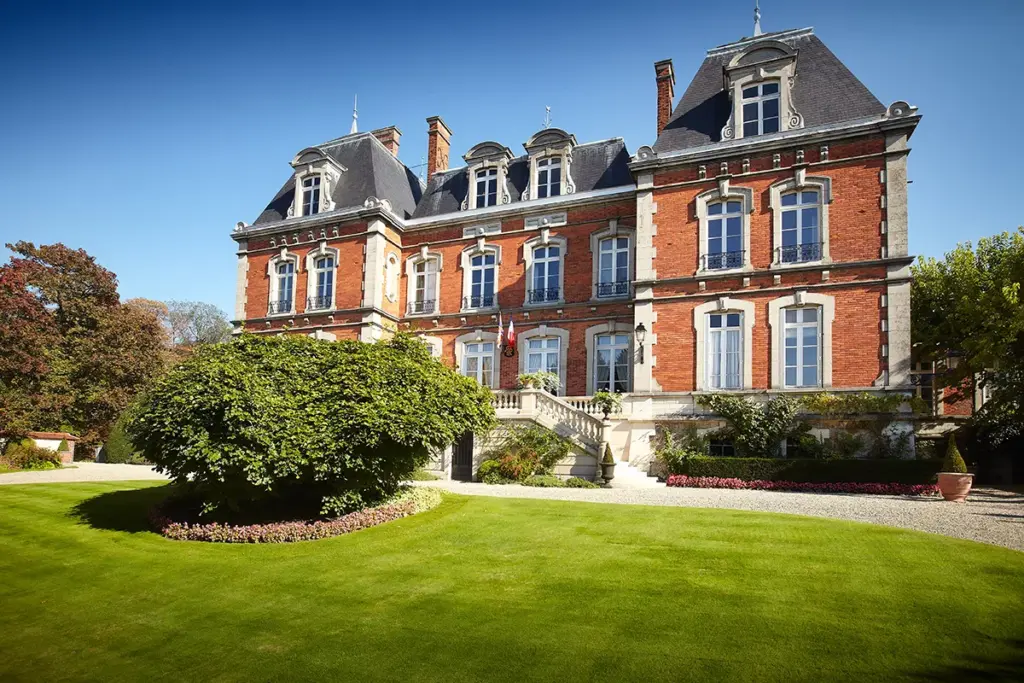
Pol Roger Brut Vintage 1988
1988 is sometimes seen as the weakest of the 88-89-90 trio. It was cooler than the other two in that group, with a lower yield. The wines have higher acidity and less richness, but since I sometimes prefer finesse and elegance over power, I have always enjoyed the 1988s. Superb tension and concentration are evident from the outset of this lovely wine, which features ripe but still remarkably fresh and youthful notes of nectarine, lime peel, and pear, while the toasty brioche aromas marry well with hints of truffle. The texture is still vibrant, with fresh acidity balancing an impression of plentiful extract that draws this inexorably to a lingering finish. This wine still has plenty of time left—many of the ’88s are still on the way up. 60 percent Pinot Noir, 40 percent Chardonnay. | 96
Krug 180th Anniversary: 15 Editions of Grande Cuvée and five of Rosé
In 2016, Krug changed the habit of a lifetime and began publicizing the base vintage of each edition of its Krug Grande Cuvée and Krug Rosé. Anne Krebiehl MW reported on a tasting that would not have been possible before this new era of transparency.
“The vertical and the various compositions allow us to see that there is—and is not—a recipe at the same time. The wine is always a blend of three varieties and usually has similar proportions of reserve wines; this is how you have that savory, rich, complex Krug red thread through all the wines, while the impressions of the years shimmer through. With all that information, an element of mystery remains, because the exact proportion of vintages and varieties is not disclosed. However, the perpetuation of a style and an idea—of Joseph Krug’s dream—is clear. All of the wines have dosage levels of between 4 and 5 grams of sugar per liter.”
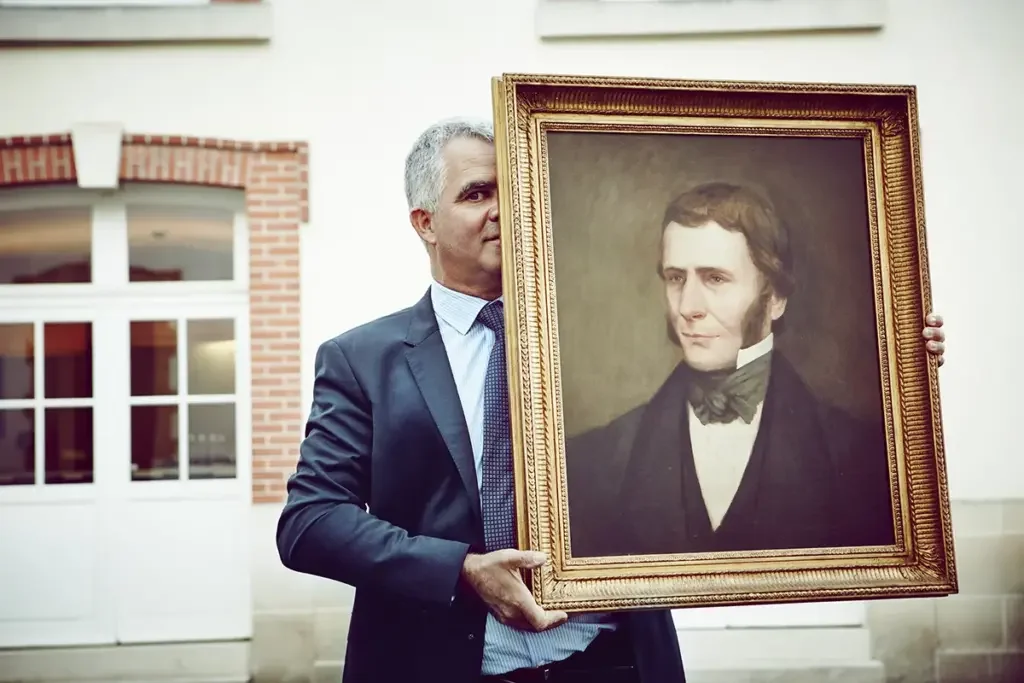
Krug Grande Cuvée 164ème Edition
(Recreated around the 2008 vintage; 68% 2008, 32% reserve wines; 35% Chardonnay, 48% Pinot Noir, 17% Pinot Meunier; 127 different wines from 11 years, the 1990 vintage the oldest in the blend)
Julie Cavil noted that “because 2008 was so perfect, less reserve wine was needed.” Subtle cold butter, a smattering of white pepper, freshly baked rye-sourdough crumb with a smoky echo of dried cèpe. Another whiff offers white peach, tender stone fruit, and gloriously pure lemon. The palate strikes with its immediate notion of chalky depth, of tautness and elegance, the impression heightened by the subtle, very fine mousse. A sleeper of immense subtlety and elegance. Very long. Very understated, but it (absolutely) lingers under your skin. 97
2014 and 2015 Champagne: Chalk and cheese?
In the new edition (issue 82) of The World of Fine Wine, Essi Avellan MW is joined by Simon Field MW and Tom Hewson for a tasting which asked how the wines of a vintage produced in “classic” conditions compare to those from a year more in keeping with Champagne’s new, warmer normal. The results suggested that the differences are more stylistic than qualitative, with Ruinart’s 2015 the clear winner overall.
“Overall, the 2014s performed according to expectations, the wines being brightly fruity and fresh, with more classically lean structures and appealing lightness,” Avellan said in her introduction. “I scored two 2014s very highly, but overall, they performed well while seldom excelling. Their current overtness and immediate appeal do make one wonder about the longevity of the wines, but at least so far, all looks satisfying for them, with no obvious concerns.
“Clearly capable of both highs and lows, the 2015 vintage occupied the top position in the tasting but also the eight lowest positions. The ash-like aromas were detected by all three tasters on certain wines. I find the aroma to detract from a wine’s purity, and the following austerity on the palate to compromise its finesse. Yet I was pleased to find many wines totally free from this character, and the hope must be that further post-disgorgement aging will build richness over the austerity on many more of them. For the rest, I didn’t let this aroma alone spoil a wine for me (despite being a sucker for purity), as there were clearly good elements in the wines, too, especially on the palate.”
Ruinart Millésime Brut Champagne France 2015 (12.5% ABV) | 94
Essi Avellan MW | Pale lemon color. Beautifully toast-complexed nose, with smoky-reductive and florally fragrant tones overlying the pristine orchard fruit core. The palate matches the nose with the fine, cushiony quality of the mousse and pristine, cool, and crunchy fruitiness. Good freshness and succulent fruitiness add on the wine’s deliciousness. A very good effort for the vintage. | 95
Simon Field MW | Green-gold, with a generous, semi-savory aromatic; umami, quince, and even a hint of white truffle. Broader than many on the palate, but not at the expense of a rigorous and pleasing structure, deferential to the warm vintage in terms of ripeness, but constrained by the rigor of its own construction. Distinctive and not without distinction. | 95
Tom Hewson | A beautifully exotic, almost dramatic nose of gunflint, mango, clementine, and blossom, this is a surprisingly svelte and brightly toned 2015 of notable refinement, subtly backed up by delicate lees-aging textural interest. The heat of the year is muted, teased into precise tropical fruits and finessed, smoky, charry notes, carefully balanced; impressive. 2023–28. | 93
Laurent-Perrier Grand Siècle No.26: Perfection in reiteration
With improved clarity in its labeling, Laurent-Perrier’s historic Multi-Vintage prestige Champagne looks set for a very bright future, according to Simon Field MW, also writing in WFW82.
“Iteration No.26 is, fairly self-evidently, the 26th release since 1959. There have also been 23 magnum releases, usually three years behind the bottles. The No.26 comprises 58 percent Chardonnay from the Côte des Blancs villages of Oger, Le Mesnil-sur-Oger, Avize, and Cramant, and 42 percent Pinot Noir, the favored villages being Ambonnay, Bouzy, Verzy, and Tours-sur-Marne, the latter being Laurent-Perrier’s home base. Some 65 percent is from 2012, initially tempestuous but finally generous; 25 percent from 2008, a taut, classic vintage; and the balancing 10 percent is from the rather unusual 2007, when, according to Maximilien, summer took place in spring, and autumn in July. If the aspiration is, in Lucie’s words, “to bridge the gap between the energetic joie de vivre of the youngest vintage and the inherent complexity that comes with a little more age,” then such a trio is hard to beat.”
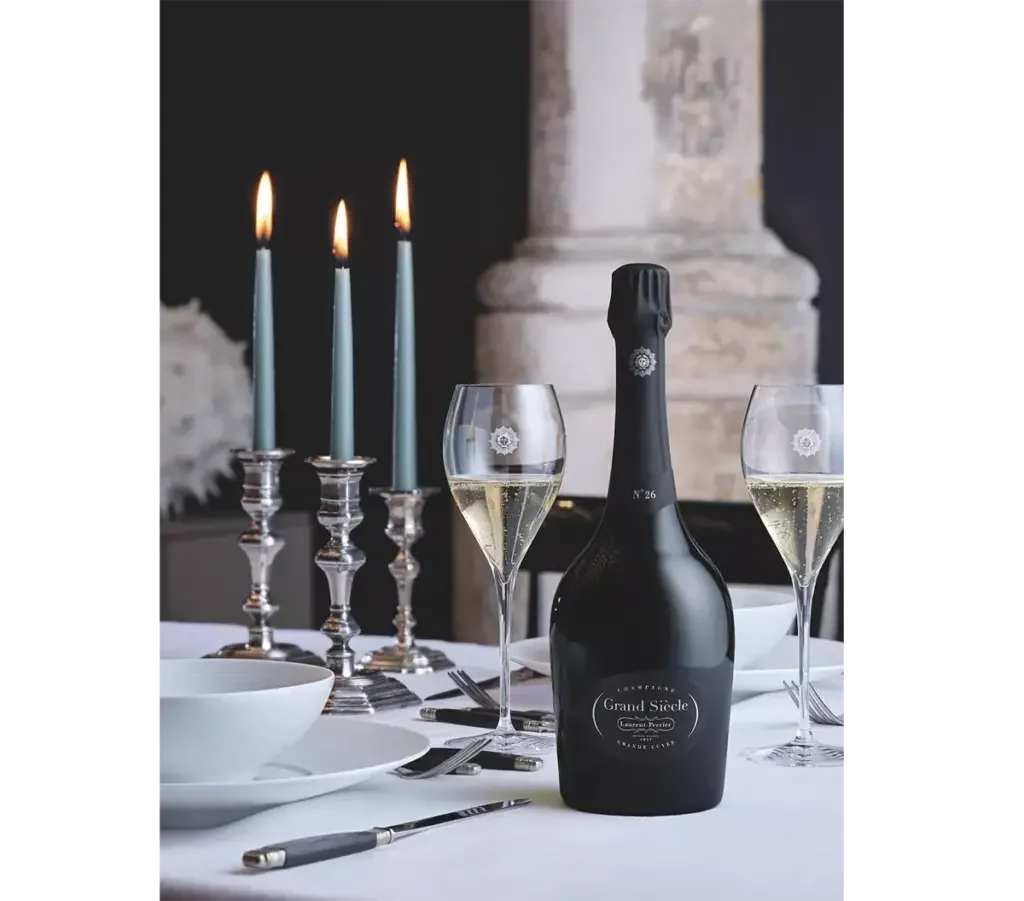
Laurent-Perrier Grand Siècle No.26
(58% Ch, 42% PN; disgorged February 2023; dosage 7g/l)
How do the ripe 2012 (65 percent) and the austere 2008 (25 percent) get on with one another, ten years down the line? The ripe and flamboyant held in check by the taut, the granitic, the linear? If only it were as simple as that—but maybe it’s just as well that it isn’t, because key here is integration: nectarine, toast, plums, and gingerbread all generous and expressive for sure, but nothing amorphous, awkward, or merely too young. The linear discipline, courtesy of the 2008, buttresses the more gregarious inclinations of the 2012 efficiently and discreetly. As a result, the ensemble is both calm and exciting, both joyful and dignified. The tension thus captured expertly echoes Bernard de Nonancourt’s guiding principles. The structure therefore underwrites the potential to improve yet further. 95–96

